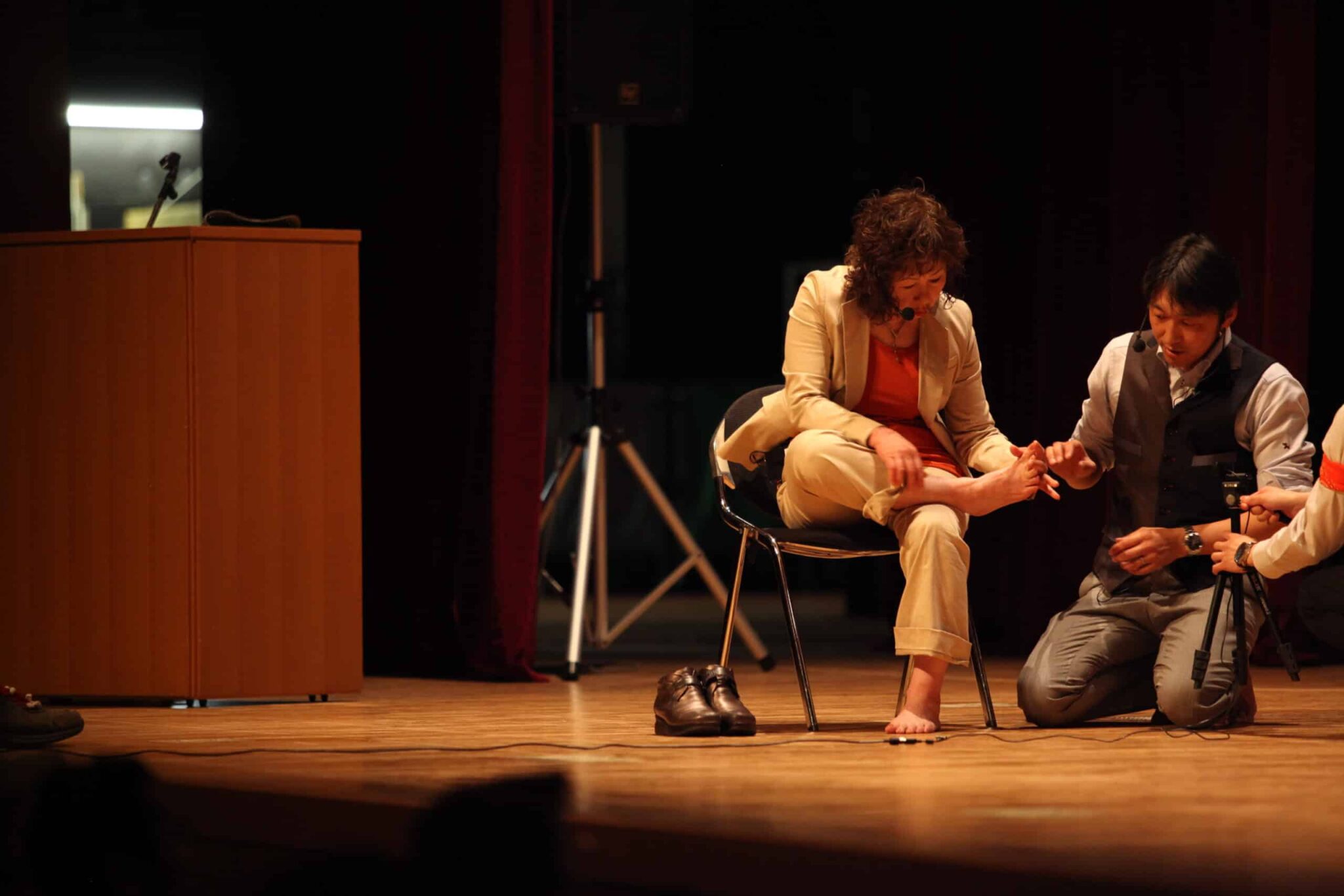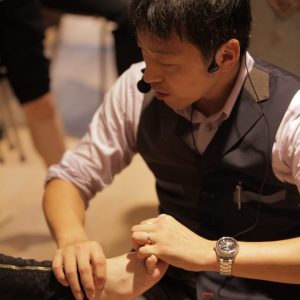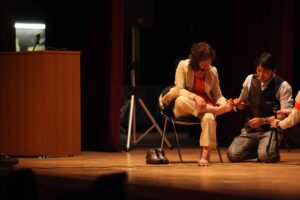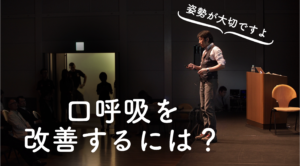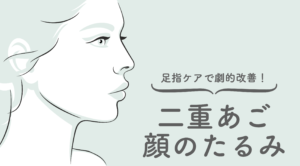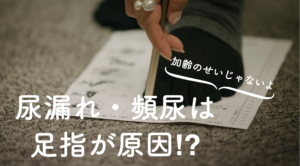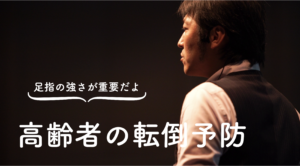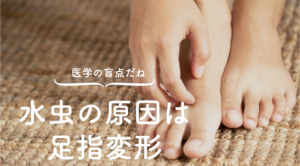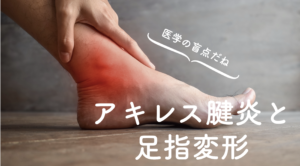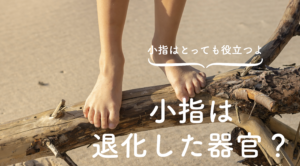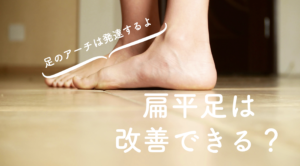Commentary by a toe doctor

YOSHIRO YUASA
Keiro Yuasa
Dr. Toe, Director of Toe Research Institute, President of Japanese Society of Functional Foot and Toe Therapy, and developer of Halmek shoes. Former director, vice president, and medical director of General Hospital. He specializes in exercise physiology and anatomy. He is also a foot and shoe specialist and a leading expert in postural occlusion therapy. He has cured various orthopedic diseases (over 70,000 people) with toe therapy alone.
Be careful if your toes are like this! Deformed toes can cause all kinds of diseases.
Very few people do not have crooked toes. This is largely due to our culture of wearing socks and shoes. Check your own feet by looking at pictures of your toes. Typical toe deformities include the following
- Hallux valgus
- Inner ring finger (inner ring finger)
- floating finger
- Kagami finger (a.k.a. hammertoe)
- Sleeping Fingers
Hallux valgus
This is a typical toe deformity. With both feet together, there is a V-shaped gap between the left and right thumbs. When the index toe enters the gap up to the base of the toe, it is a hallux valgus. The big toe is the main pillar that supports the body. If the thumbs are bent, the entire body, not just the feet, will lose strength.
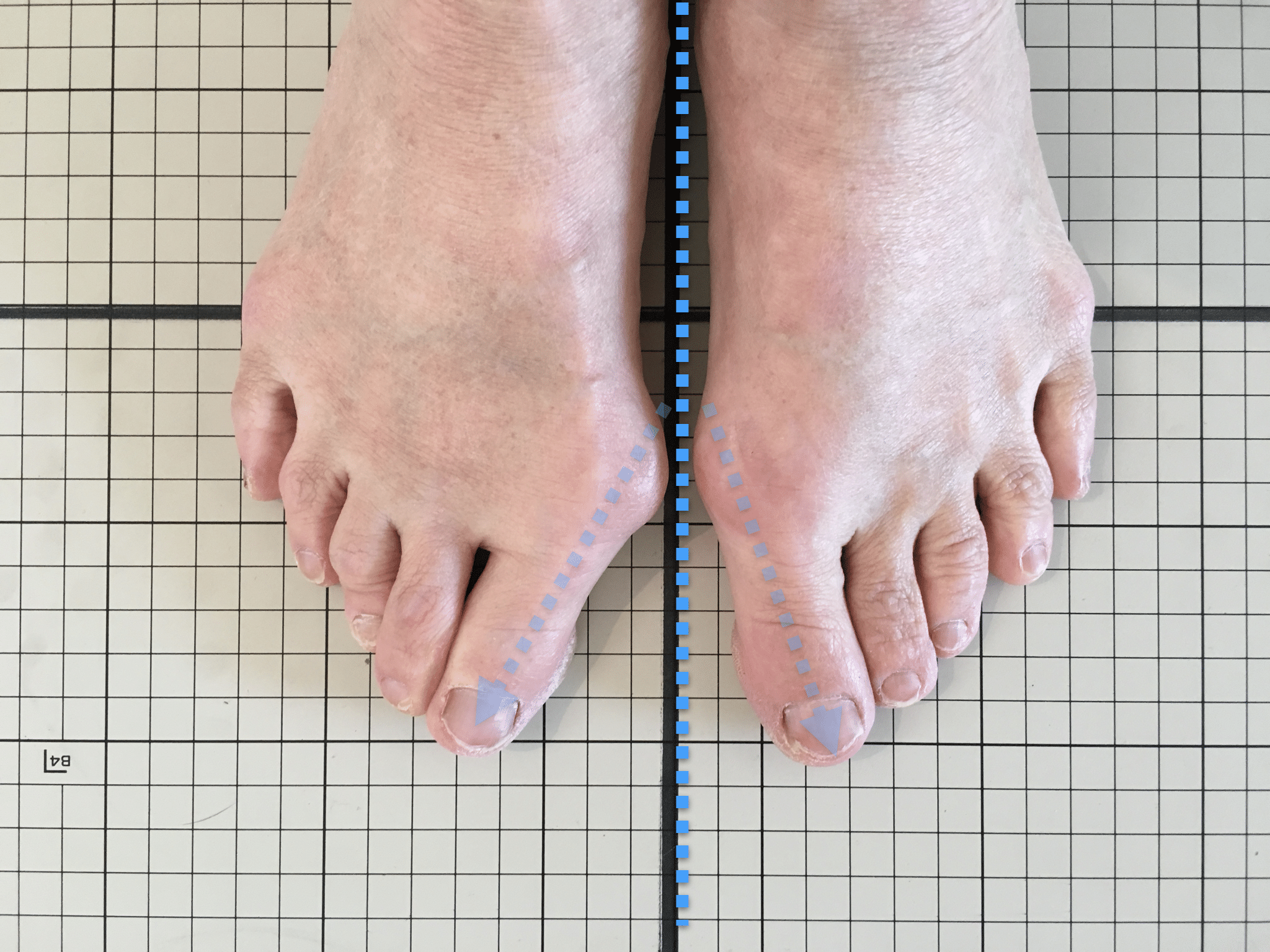
Hallux valgus
If there is a gap around the nail, it is called an inner ring finger. If the base of the little finger is red, if the little finger nail is small, or if there is callus between the ring and little fingers, the possibility is great. The little finger controls the body weight so that it is not applied outward. People who cannot use their little toes are more likely to have "O-feet" because their weight is placed on the outside. Furthermore, they are also prone to "stiff shoulders" and "stiff neck" due to the difference between the left and right sides of the body.

Kagami finger (hammertoe)
If the nails of the second to fourth toes point straight down or are difficult to see when viewed from above, you have a "flexed toe. Some people have "hidden flexor toes," in which the toes flex only when weight is placed on them. The flexor toe is a brake on the foot. If you have a habit of flexing your toes, your body is constantly braking. You may fall or trip easily. Furthermore, the body gets tired easily and the calves of the feet tend to become flat. Your posture may also become more like a hunchback, and the "bent finger" may be the reason why you walk in an unusual manner.
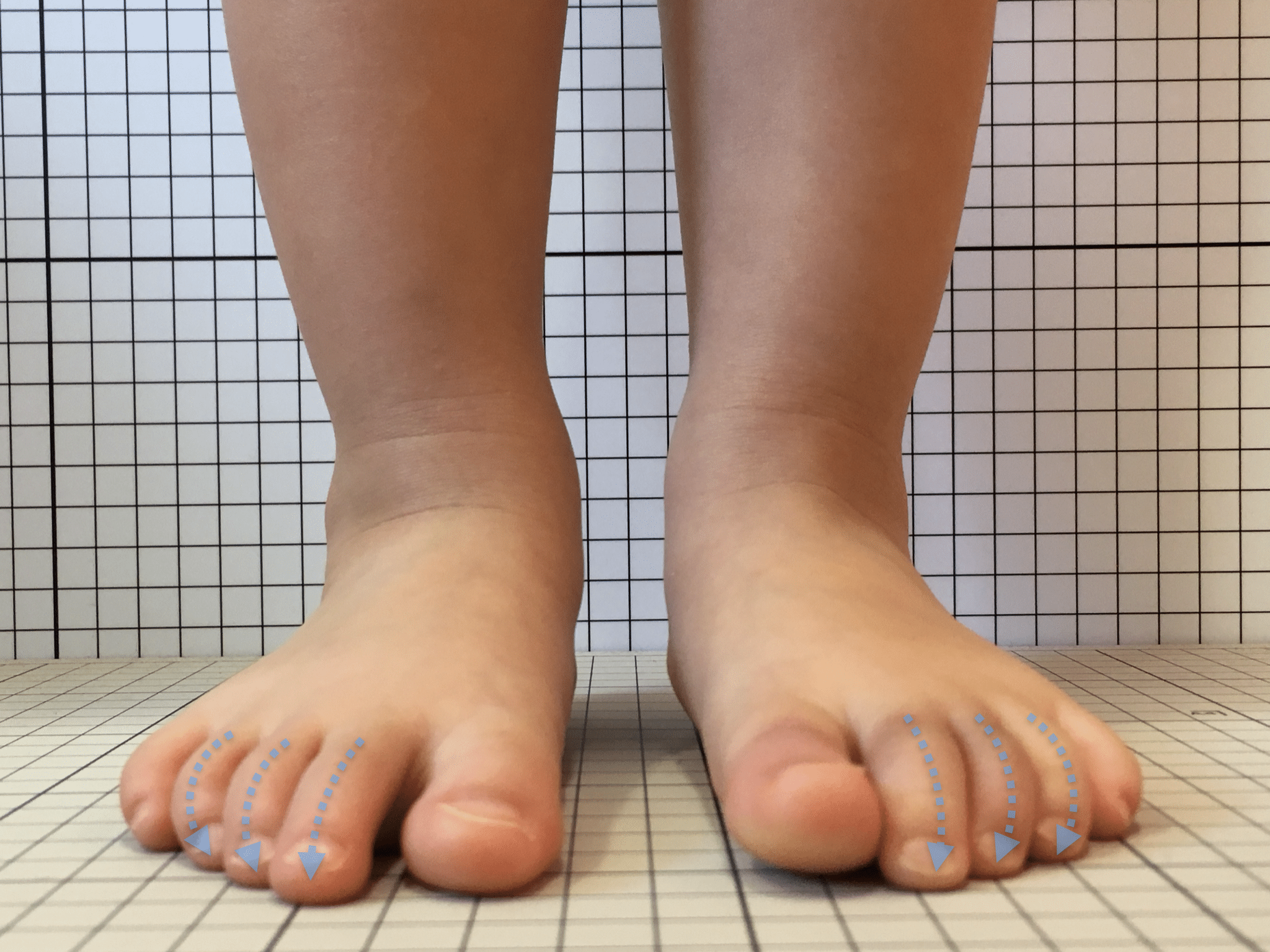
Floating toe of thumb
If the nail is not visible when viewed from the front, or if the nail is warped upward unlike the direction of the nails on the other fingers, it is an udibuye. If the thumb portion of your socks is always torn, there is a high possibility that you have a floating toe.
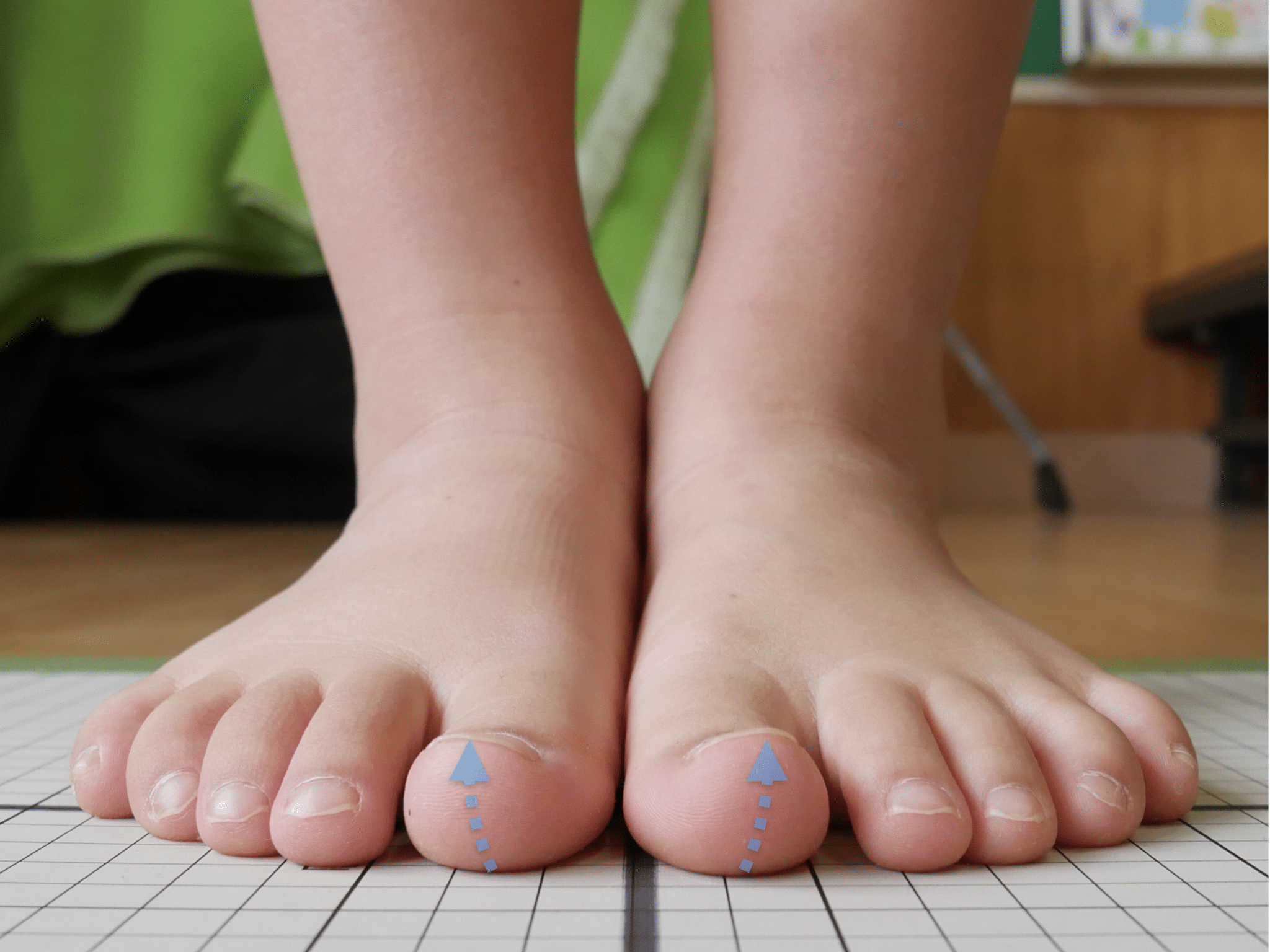
Floating toe of little finger
You can use a business card, but if you can put it under your pinky finger and it scuffs in, you have a floating finger. In a nursery school survey, the floating finger rate for 3-year-olds was over 70%. In a survey at a dental clinic, the floating finger rate was 99%.
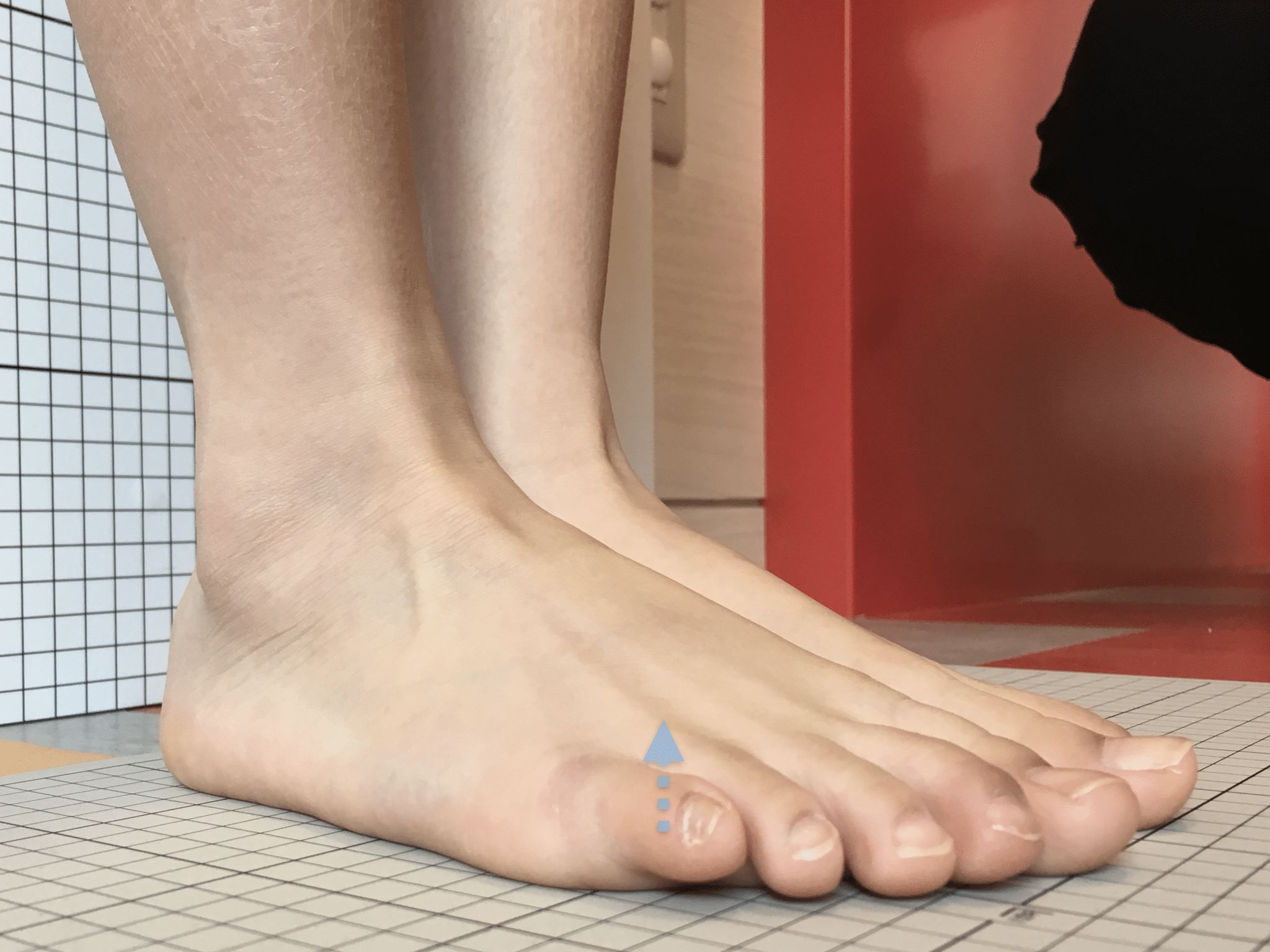
Sleeping Fingers
If the little finger or ring finger lies directly on its side or is bent into a "wiggle" shape, it is a "sleeping finger.
It is easy to see this by looking at the direction of the nails. Compared to the thumb, the ring and little fingers are easily neglected. However, without the little finger of the hand, it would be difficult to hold a knife and wear things. The same goes for a baseball bat or a golf club; without the little finger, it would be impossible to insert it from the t. The same is true of the feet, but without the use of the little finger, it becomes difficult to stand up straight or walk.
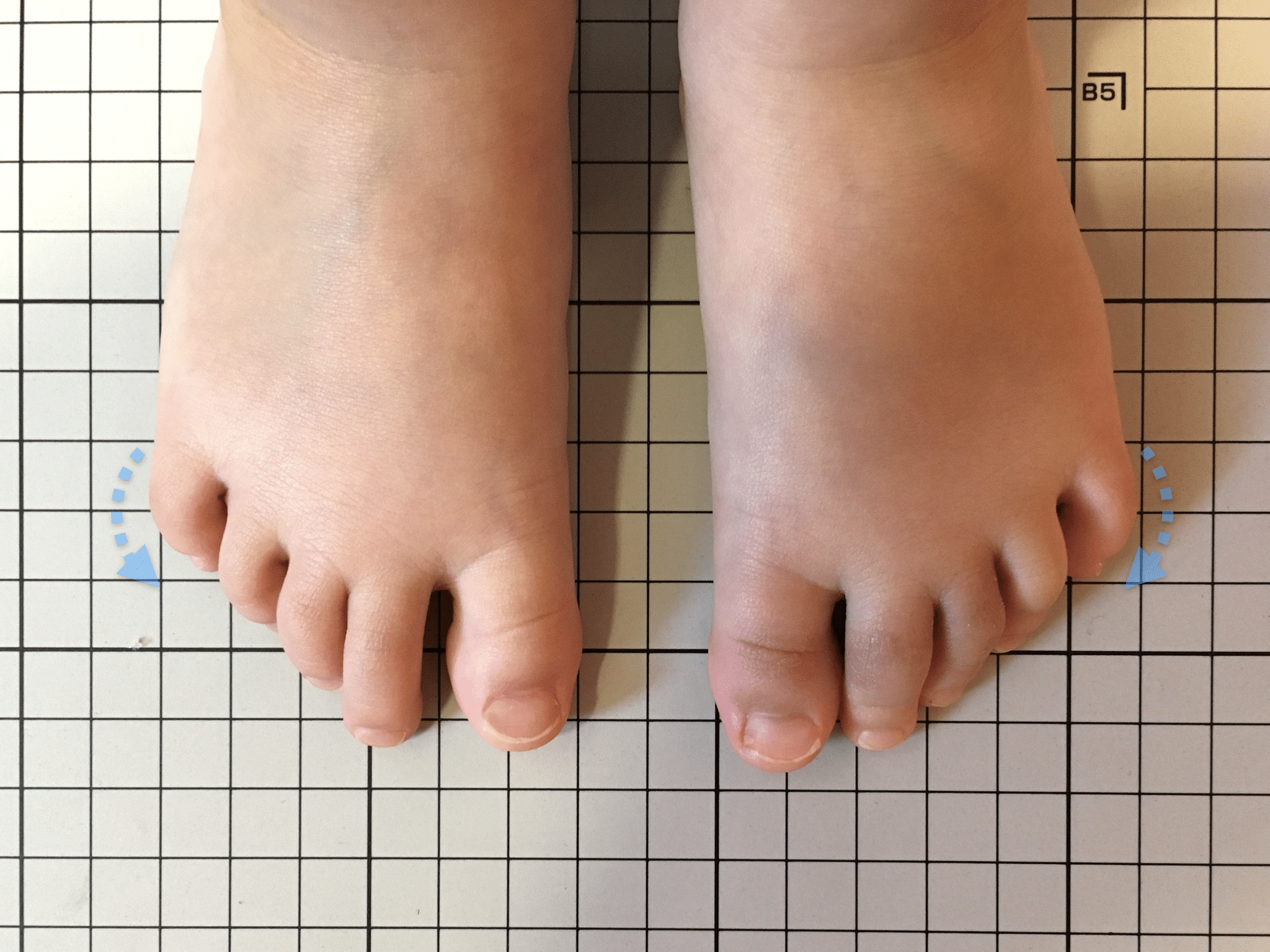
Many people know about hallux valgus, but may not have heard of hallux valgus, floating toe, crouching toe, or sleeping toe. This is because they have not traditionally been considered a problem. However, when we examined the relationship between the toes and the body, we found that these toe deformities cause imbalance in the body and have a negative impact on the entire body. Indeed, toe deformities were the "source of all diseases.
Causes of toe deformity
Shoeing causes toe deformity.
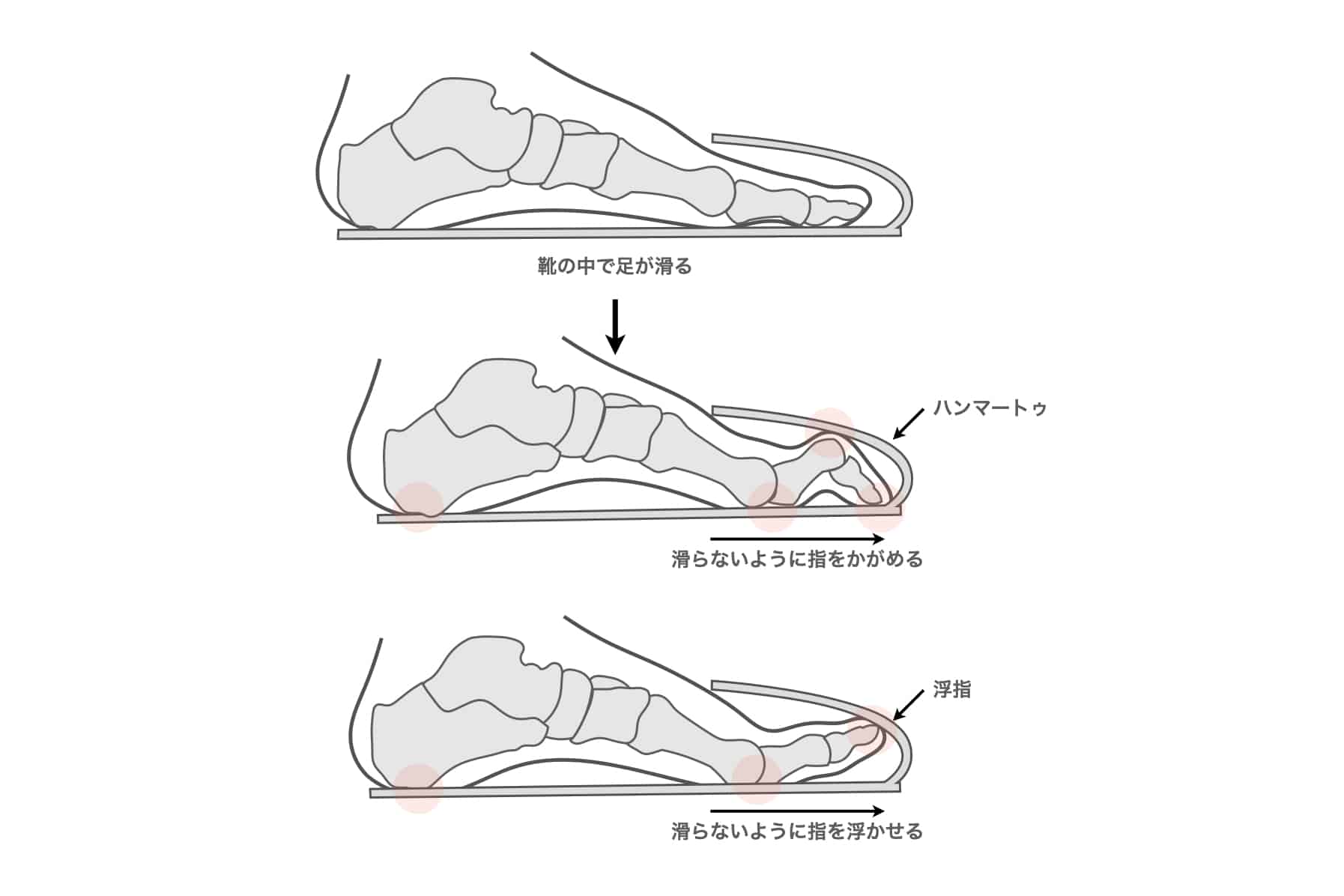
Most modern people have deformed toes and a collapsed foundation due to the wrong choice of shoes and the way they wear them. When the foot slips back and forth in the shoe,Bending toes (hammertoes) or floating toes as toes try to stop slippingThe toes can also be bent by socks and slippers. Socks and slippers can also cause the toes to bend.
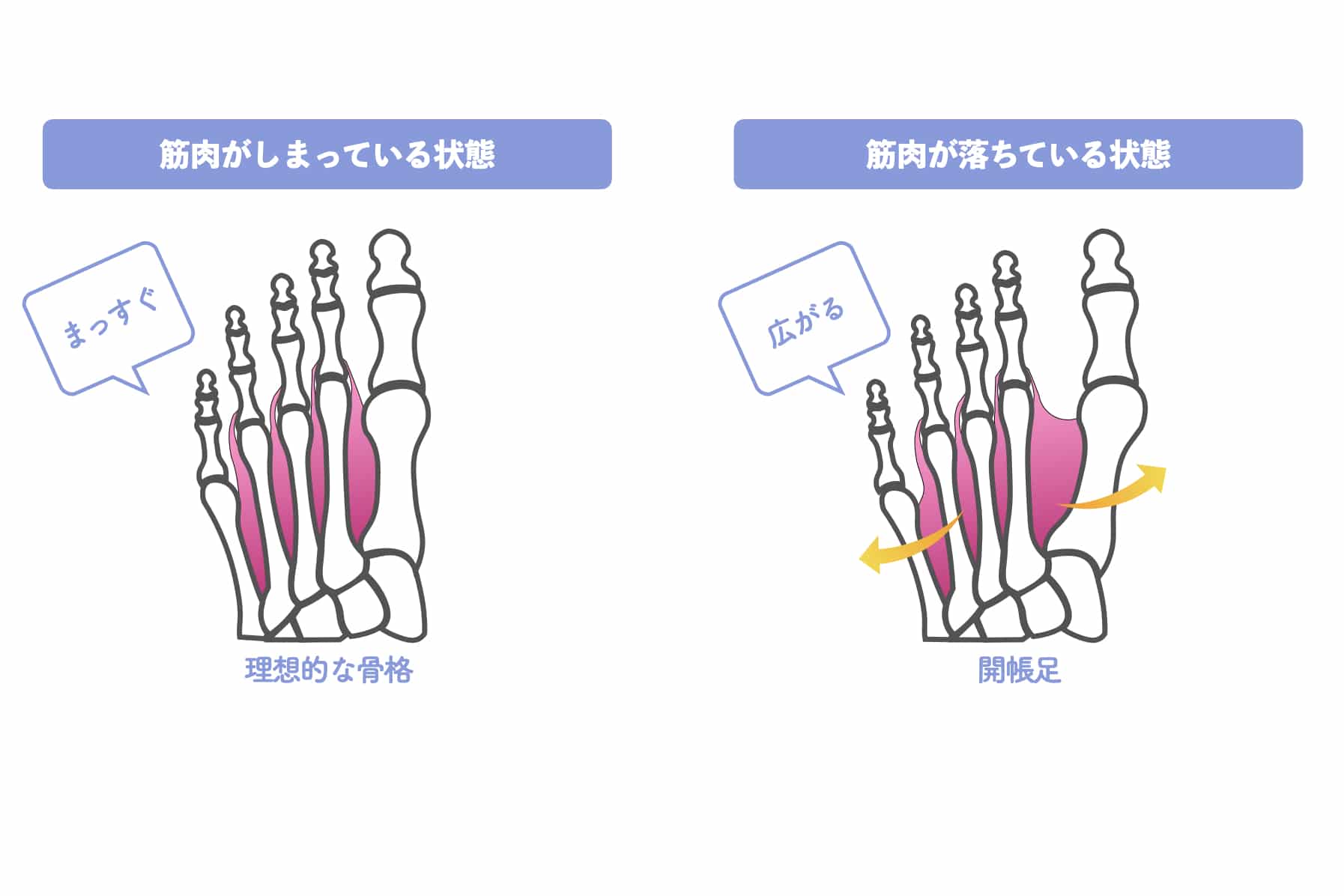
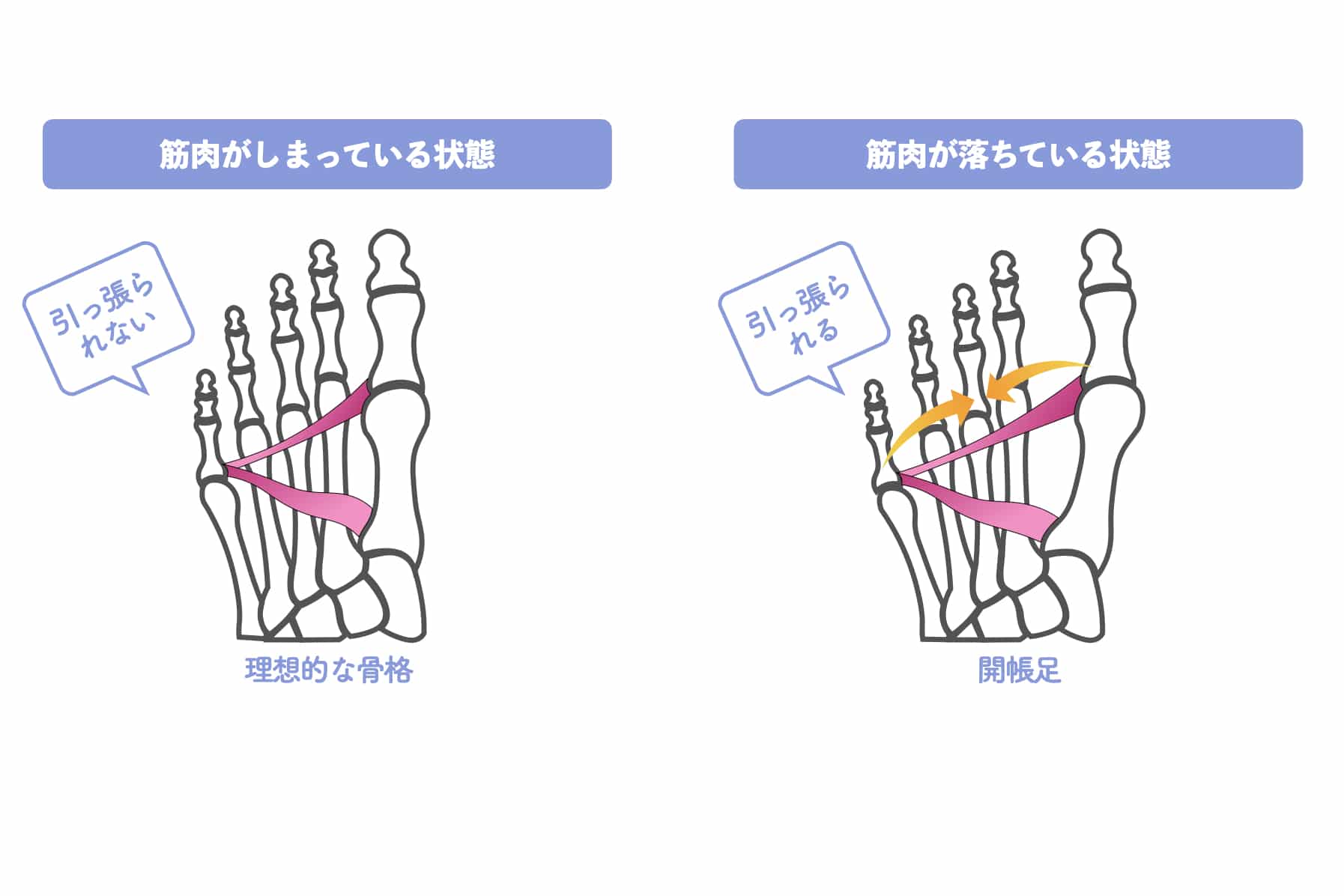
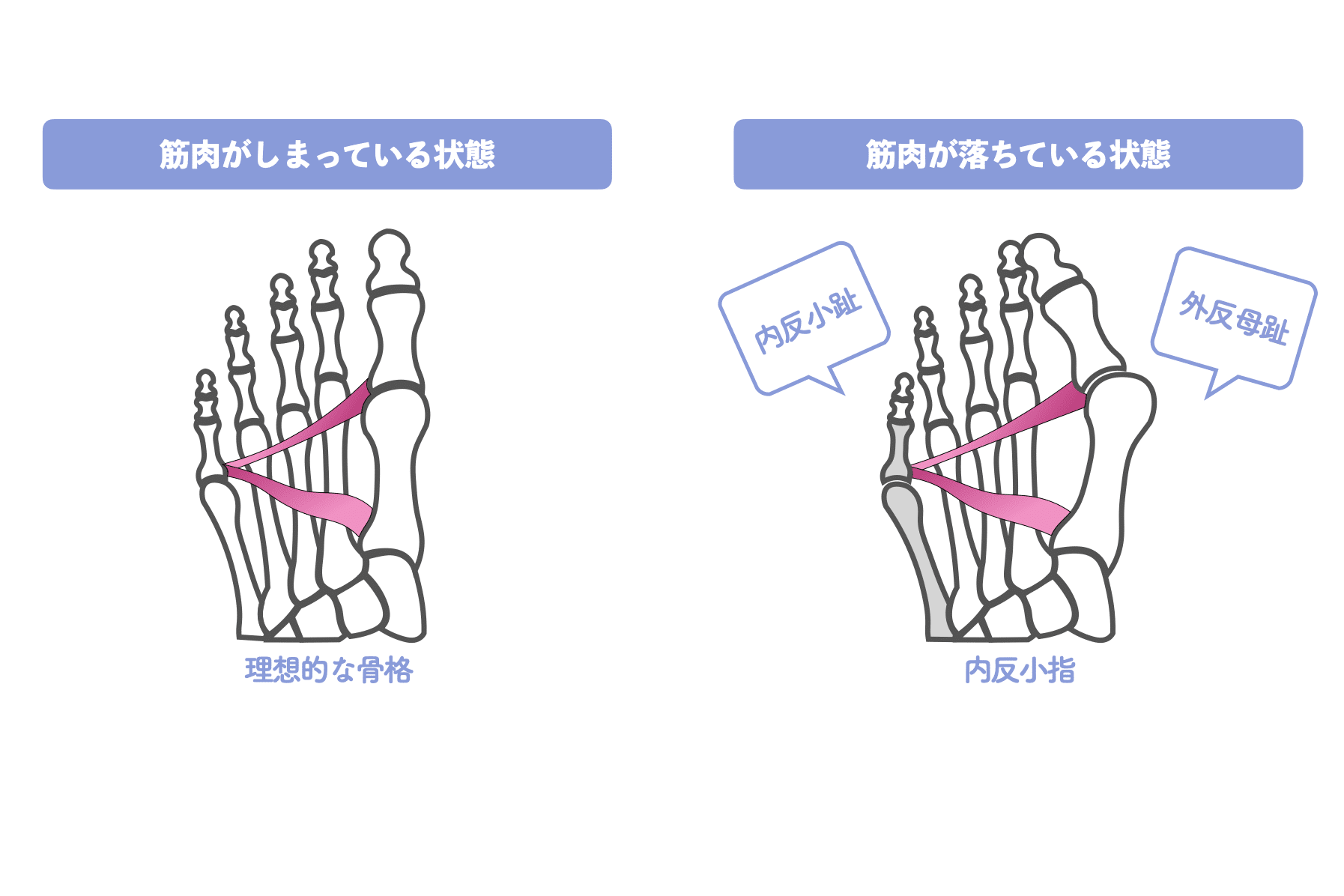
In addition, the bones of the feet are straight, supported by many muscles, but most of the muscles are attached to the toes. Therefore, if you walk without functional use of the toes,Muscle weakness in the foot causes deformities of the big toe and big toeThe arch is not always the most important factor in the posture of a person. It is not well known in the medical literature that a collapse of the arch can lead to a heel center of gravity, further contributing to poor posture such as hunching.
Even the material and type of socks deform the toes.
Naturalists may insist on cotton or silk materials. However, it is a common experience for everyone in the world that socks made of cotton or silk materials cause the phenomenon of foot slippage, resulting in bent toes and poor posture. Some socks also have non-slip soles. We have also tried them in prototypes, and we know they are effective in preventing slippage between shoes and socks. However,The socks are not anti-slip, so I could not prevent my feet from slipping inside the socks!The following is a list of the most common problems with the
In regular tubular socks (tube socks), which are worn by most people around the world, 4g~9gf/㎠ of force is applied to the toes, causing pressure on the toes. Also, many cotton and silk socks have a silken finish, which makes the feet slip easily in shoes and socks. Socks that slip easily and put pressure on the toes can cause toe dysfunction, leading to bent or floating toes. Conversely, fugly tube socks cause the feet to slide around in the socks, leading to clasped or floating toes.
In addition, cotton and silk socks on the market are "silkenized" to make them look very shiny. They are very beautiful looking,Silket finish makes the surface of the material slippery, so feet can easily slip inside socks and shoesThis is why it contributes to toe deformity.
How to heal toe deformities
Here we would like to explain how you can solve the problem yourself, with general diagnosis, treatment, and causes. Please refer to the following sites
The Key to Preventive Medicine is in the Toes
In the case of physical ailments, most of them are not caused by heredity, aging, muscle weakness, or disease, but by toe deformities. Spreading and stretching the toes and improving toe deformities can lead to preventive medicine as toes can be raised, the body can exert its natural strength, and the ability to stand on its own feet can be improved.
Please see the photo above. This is a scene from one of my lectures on the theme of "Spreading Your Toes. A woman in her 70s, who came to the venue with a cane, was not even a bit scared when I put my 70 kg weight on her hands, which were folded behind her back. In fact, she had pain in her knee. But when she spread her toes apart, she gained the strength to stand on her own feet and support me lightly.
I often perform this experiment in my lectures. The reason is that I want people to see, in a visible form, how much more powerful one's foot can be when one widens one's toes. When I see it in front of their eyes, they are amazed. If the toes are spread, regardless of age, the body will be able to stand on its own feet and become free from any problems.
1) Asai, H., Nara, I., Tatsuno, K., et al: Study on the action of toes in maintaining standing posture. Journal of Physical Therapy, 1989, 23: 137-141.
2) Kasuya T, Murakami T, Tsuge H, et al: Function of the toes in postural adjustment in the resting upright position: comparison between frail elderly and young patients. Clinical Physiotherapy Research, 2010, 27: 89-92.
3) Steindler A: Kinesiology of the human body under normal and pathological conditions. Charles C Thomas, Springfield, 1977, pp436-438.
4) Jarrett BA, Manzi JA, Green DR: Interossei and lumbricales muscles of the foot. An anatomical and functional study. J Am Podiatry Assoc, 1980, 70: 1-13.
5) Japanese Orthopaedic Association (ed.): Glossary of Orthopaedic Surgery, 8th ed. Nankendo, Tokyo, pp. 56, 77, 169.
6) Kota Watanabe: Diseases of the toes. Hammer toe, hammer toe, and claw toe. Arthritis Surgery, 2013, 32: 80-86.
7) Yasuda, T., Kinoshita, M.: Diagnosis and treatment of toe pain in hammertoe and hammer toe deformity. Mon Book Orthop, 2010, 23: 39-43.
8) Schrier JC, Verheyen CC, Louwerens JW: Definitions of hammer toe and claw toe: an evaluation of the literature. J Am Podiatr Med Assoc, 2009, 99: 194-197 .
9) Shirzad K, Kiesau CD, DeOrio JK, et al: Lesser toe deformities. J Am Acad Orthop Surg, 2011, 19: 505-514.
10) Gilroy AM: Promethean Anatomy Essential Text. Nakano T (Supervisor), Igaku Shoin, Tokyo, 2019, pp361-375.
11) Kelly LA, Kuitunen S, Racinais S, et al: Recruitment of plantar intrinsic foot muscles with increasing postural demand. Avon), 2012, 27: 46-51.
12) Menz HB, Morris ME, Lord SR: Foot and ankle risk factors for falls in older people: a prospective study. J Gerontol A Biol Sci Med Sci, 2006, 61: 866-870
13) Jung DY, Kim MH, Koh EK, et al: A comparison in the muscle activity of the abductor hallucis and the medial longitudinal arch angle during toe curl and Phys Ther Sport, 2011, 12: 30-35.
14) Nakano, T.: Functional Anatomy of Nervous System Diseases, 2nd ed. Medical Press, Tokyo, 2018, p. 58.
15) Coughlin MJ: Mallet toes, hammer toes, claw toes, and corns. causes and treatment of lesser-toe deformities. Postgrad Med, 1984, 75: 191-198.
16) Bade H, Tsikaras P, Koebke J: Pathomorphology of the hammer toe. Foot Ankle Surg, 1998, 4: 139-143.
17) Mizuno, S.: Research on the human foot: Development from the flat foot problem. Medical and Dental Publishing, 1973.
18) Mizuno, Shotaro: The human foot - this enigmatic thing. Sogensha, 1984.
19) Mickle KJ, Munro BJ, Lord SR, et al: ISB Clinical Biomechanics Award 2009: toe weakness and deformity increase the risk of falls in older people. Biomech (Bristol, Avon), 2009, 24: 787-791.

